|
|
Published February 6th, 2019
|
Cynthia Brian's Gardening Guide for February
|
| Love is a rose |
| By Cynthia Brian |
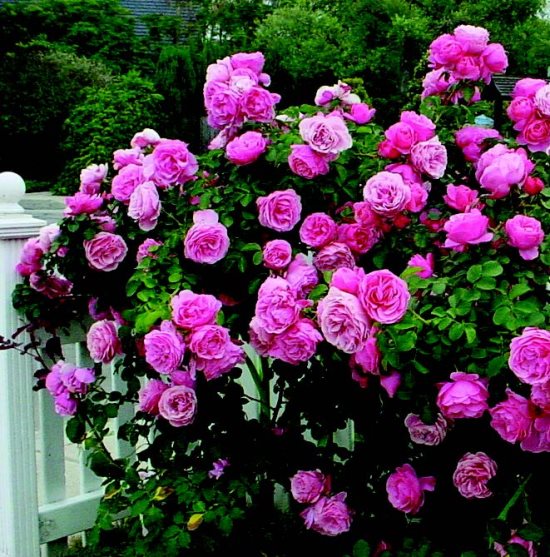 |
| A beautiful bush of old roses. Photos Cynthia Brian |
"Everything is coming up roses!" - Ethel Merman
 When Cupid shoots his arrow of amour on Feb. 14, more than 51 percent of the flowers bestowed upon the lovers will be roses. The allure of roses dates back more than 5,000 years when rose cultivation began in China. Evidence in fossils indicates that the wild rose is as ancient as 35 million years. No wonder the rose has symbolized beauty, love, politics and war for the past five centuries in our modern world.
When Cupid shoots his arrow of amour on Feb. 14, more than 51 percent of the flowers bestowed upon the lovers will be roses. The allure of roses dates back more than 5,000 years when rose cultivation began in China. Evidence in fossils indicates that the wild rose is as ancient as 35 million years. No wonder the rose has symbolized beauty, love, politics and war for the past five centuries in our modern world.
 Roses possess a classic beauty with an unrivaled diversity of shapes, sizes, colors and fragrances. Blooms may be solitary and delicate, semi-double, open cupped, rosette, pompon, peony-like, buttoned and ruffled. They may be single stemmed or present a bouquet of several blossoms on a stalk. Newer disease-resistant varieties brag continuous flowering from the first bud in spring to the final pruning in winter.
Roses possess a classic beauty with an unrivaled diversity of shapes, sizes, colors and fragrances. Blooms may be solitary and delicate, semi-double, open cupped, rosette, pompon, peony-like, buttoned and ruffled. They may be single stemmed or present a bouquet of several blossoms on a stalk. Newer disease-resistant varieties brag continuous flowering from the first bud in spring to the final pruning in winter.
 Best of all, with a little know-how, roses are one of the easiest plants to grow in our gardens, offering perennial joy. Plant them in a formal garden bordered by boxwoods, or add varying heights of roses to a casual mixed backyard bed. Pop them in containers to add elegance to a porch, patio, or balcony. Train climbers and ramblers to grow on arches, gates, trellises, fences and walls, adding vertical appeal.
Best of all, with a little know-how, roses are one of the easiest plants to grow in our gardens, offering perennial joy. Plant them in a formal garden bordered by boxwoods, or add varying heights of roses to a casual mixed backyard bed. Pop them in containers to add elegance to a porch, patio, or balcony. Train climbers and ramblers to grow on arches, gates, trellises, fences and walls, adding vertical appeal.
 In our hardiness zone, February is an excellent month to plant bare root roses.
In our hardiness zone, February is an excellent month to plant bare root roses.
 How to plant bare root roses
How to plant bare root roses
 1. Decide where you want to plant roses. Although some varieties will tolerate a reasonable amount of shade, most roses require at least four hours of daily sunshine.
1. Decide where you want to plant roses. Although some varieties will tolerate a reasonable amount of shade, most roses require at least four hours of daily sunshine.
 2. Once you know the "where," you can decide the "which." Peruse rose catalogs and visit your nursery. You want to purchase the right rose for the right purpose. Make sure that the bare-root roses you select are healthy and sturdy. If planting more than one, it is best to purchase the same color and type of rose in uneven numbers. For example, buy three or five of the same rose for preferable impact.
2. Once you know the "where," you can decide the "which." Peruse rose catalogs and visit your nursery. You want to purchase the right rose for the right purpose. Make sure that the bare-root roses you select are healthy and sturdy. If planting more than one, it is best to purchase the same color and type of rose in uneven numbers. For example, buy three or five of the same rose for preferable impact.
 3. Soak your roses overnight in a bucket of water to rehydrate them.
3. Soak your roses overnight in a bucket of water to rehydrate them.
 4. Dig a hole large enough to allow the roots to spread.
4. Dig a hole large enough to allow the roots to spread.
 5. Spade the soil well and add compost.
5. Spade the soil well and add compost.
 6. After removing each rose from the bucket, place the bare roots of each rose in a separate hole. The bottom of the stems needs to be two to three inches below the top of the hole.
6. After removing each rose from the bucket, place the bare roots of each rose in a separate hole. The bottom of the stems needs to be two to three inches below the top of the hole.
 7. Replace the soil and tap around the rose with your foot until the ground is firm.
7. Replace the soil and tap around the rose with your foot until the ground is firm.
 8. Water slowly and deeply.
8. Water slowly and deeply.
 9. Mulch with bark, shredded wood, or pine needles to three inches of thickness. This prevents erosion, controls temperature variations, suppresses weeds, and makes for a prettier presentation.
9. Mulch with bark, shredded wood, or pine needles to three inches of thickness. This prevents erosion, controls temperature variations, suppresses weeds, and makes for a prettier presentation.
 Maintenance of your rose garden
Maintenance of your rose garden
 1. Watering properly is key to healthy roses. Water deeply without flooding and be cognizant of your sprinkler system to assure that your roses are not over or under irrigated.
1. Watering properly is key to healthy roses. Water deeply without flooding and be cognizant of your sprinkler system to assure that your roses are not over or under irrigated.
 2. Fertilize in March, then approximately eight weeks apart starting in May through September. For my first feeding, I like to use alfalfa pellets mixed with diatomaceous earth.
2. Fertilize in March, then approximately eight weeks apart starting in May through September. For my first feeding, I like to use alfalfa pellets mixed with diatomaceous earth.
 3. Although the new varieties of roses are more disease resistant, black spot, rust, and powdery mildew remain the culprits to control. Destroy any diseased, fallen leaves.
3. Although the new varieties of roses are more disease resistant, black spot, rust, and powdery mildew remain the culprits to control. Destroy any diseased, fallen leaves.
 4. If you have a plethora of other flowers, your garden will have developed a more natural eco-system, keeping most pests away. Aphids can be sprayed with soapy water, or introduce ladybugs.
4. If you have a plethora of other flowers, your garden will have developed a more natural eco-system, keeping most pests away. Aphids can be sprayed with soapy water, or introduce ladybugs.
 5. Deadhead as flowers wilt and prune stems back one and a half feet after flushes of flowers to shape your plant.
5. Deadhead as flowers wilt and prune stems back one and a half feet after flushes of flowers to shape your plant.
 6. Once a year, usually toward the end of January, heavy prune roses removing any dead, diseased or damaged stems. Old wood can be cut from older roses to encourage fresh growth. Shrub roses can be pruned one-third to two-thirds. Hybrid teas and floribundas should be pruned to three-quarters. Leave ramblers alone or shape them according to your wishes. Remove the dead wood on climbers and cut the year's flowering stems back to three-quarters.
6. Once a year, usually toward the end of January, heavy prune roses removing any dead, diseased or damaged stems. Old wood can be cut from older roses to encourage fresh growth. Shrub roses can be pruned one-third to two-thirds. Hybrid teas and floribundas should be pruned to three-quarters. Leave ramblers alone or shape them according to your wishes. Remove the dead wood on climbers and cut the year's flowering stems back to three-quarters.
 Whether you decide to cultivate shrub roses, old roses, rambling roses, climbing roses, hybrid teas, tree roses or floribundas, you will be rewarded with beauty, fragrance, and the ability to create sweet scented arrangements throughout the year.
Whether you decide to cultivate shrub roses, old roses, rambling roses, climbing roses, hybrid teas, tree roses or floribundas, you will be rewarded with beauty, fragrance, and the ability to create sweet scented arrangements throughout the year.
 For Valentine's Day, consider giving your loved one a bouquet of roses and a bare root plant. Double the pleasure. Everything is coming up roses!
For Valentine's Day, consider giving your loved one a bouquet of roses and a bare root plant. Double the pleasure. Everything is coming up roses!
 Cynthia Brian's Gardening Guide for February
Cynthia Brian's Gardening Guide for February

 - IDENTIFY: With the rains, fungi are at their edible best. If you don't know how to identify mushrooms that grow in your garden, do not eat them. Buy from a reputable source and enjoy the impressive nutritional benefits of this humble fungus. Whether you eat shitake white, oyster, hen-of-the-woods, Portobello, or others, mushrooms are brimming with phytochemicals, antioxidants, and fiber, all which are packed with anti-inflammatory properties that can protect you from numerous diseases.
- IDENTIFY: With the rains, fungi are at their edible best. If you don't know how to identify mushrooms that grow in your garden, do not eat them. Buy from a reputable source and enjoy the impressive nutritional benefits of this humble fungus. Whether you eat shitake white, oyster, hen-of-the-woods, Portobello, or others, mushrooms are brimming with phytochemicals, antioxidants, and fiber, all which are packed with anti-inflammatory properties that can protect you from numerous diseases.
 - APPRECIATE: Daffodils and narcissi have unfurled their blooms suggesting the promise of printemps.
- APPRECIATE: Daffodils and narcissi have unfurled their blooms suggesting the promise of printemps.
 - BUY: "Growing with the Goddess Gardener" is a gift that will give perennially. Order copies with extra freebies at http://www.CynthiaBrian.com/online-store.
- BUY: "Growing with the Goddess Gardener" is a gift that will give perennially. Order copies with extra freebies at http://www.CynthiaBrian.com/online-store.
 - PERUSE catalogs to create your plan for spring planting.
- PERUSE catalogs to create your plan for spring planting.
 - FIND a rose with the same name of your partner. If you have the dollars, there are companies that will allow you to name a rose.
- FIND a rose with the same name of your partner. If you have the dollars, there are companies that will allow you to name a rose.
 - ENJOY this final month of garden rest before the busy spring season arrives.
- ENJOY this final month of garden rest before the busy spring season arrives.
 Happy Gardening. Happy Growing. Happy Love Day!
Happy Gardening. Happy Growing. Happy Love Day!

|
 |
| A favorite coupling for Valentine's Day, red roses and baby's breath. |
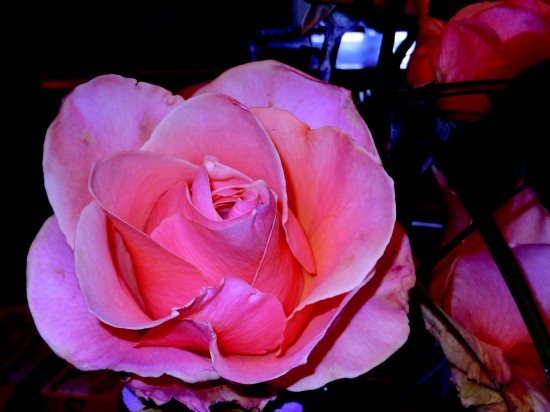 |
| A warm apricot colored rose. Brandy. |
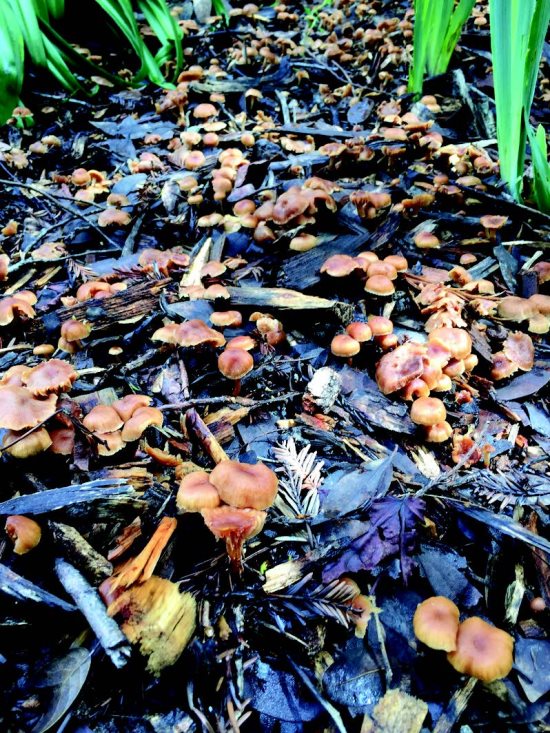 |
| Don�t eat the mushrooms growing in your garden unless you know they are edible. |
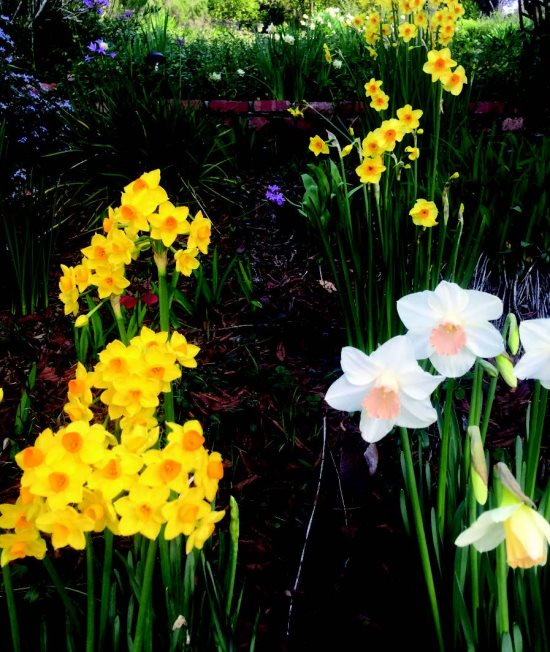 |
| Hills of narcissi and early daffodils light up the winter landscape. |
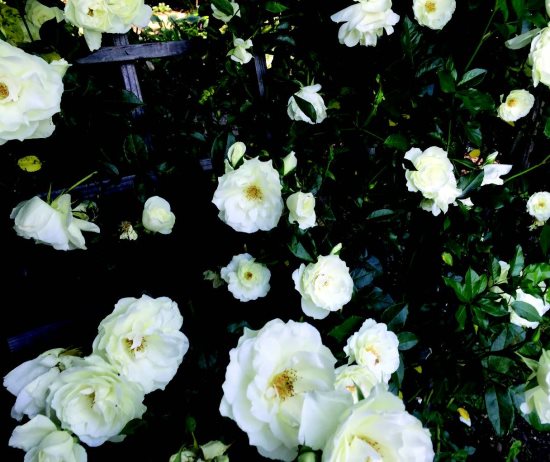 |
| A trellis of rambling white roses. |
| |
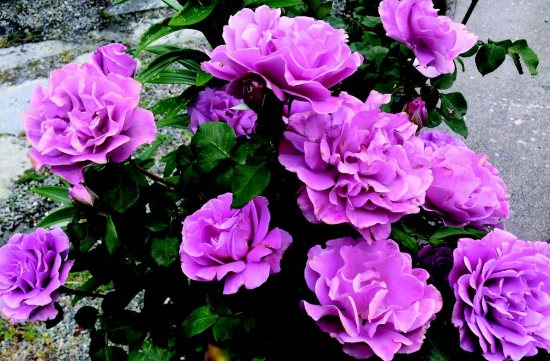 |
| The fragrant
ruffled lilac rose, Angel Face. |
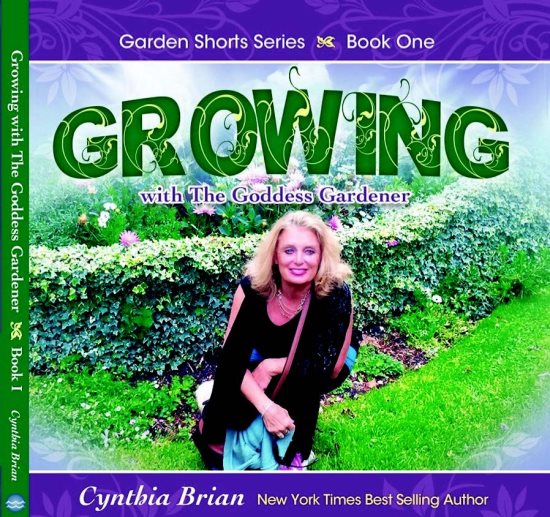 |
| Growing with the
Goddess Gardener" makes an enduring gift for any garden lover. |
 |
| Cynthia Brian
with her namesake rose, |
| "Cynthia Cynthia Brian, The Goddess Gardener, raised in the
vineyards of Napa County, is a New York Times best-selling author,
actor, radio personality, speaker, media and writing coach as well as
the Founder and Executive Director of Be the Star You Are1 501 c3.
Tune into Cynthia's Radio show and order her books at
www.StarStyleRadio.com.
Buy a copy of her new books, Growing with the Goddess Gardener and Be
the Star You Are! Millennials to Boomers at
www.cynthiabrian.com/online-store. Hire Cynthia for projects,
consults, and lectures.
Cynthia@GoddessGardener.com
www.GoddessGardener.com
Donate to Fire Disaster Relief via Be the Star You Are! 501 c3 at
www.BethestarYouAre.org |
|
|













